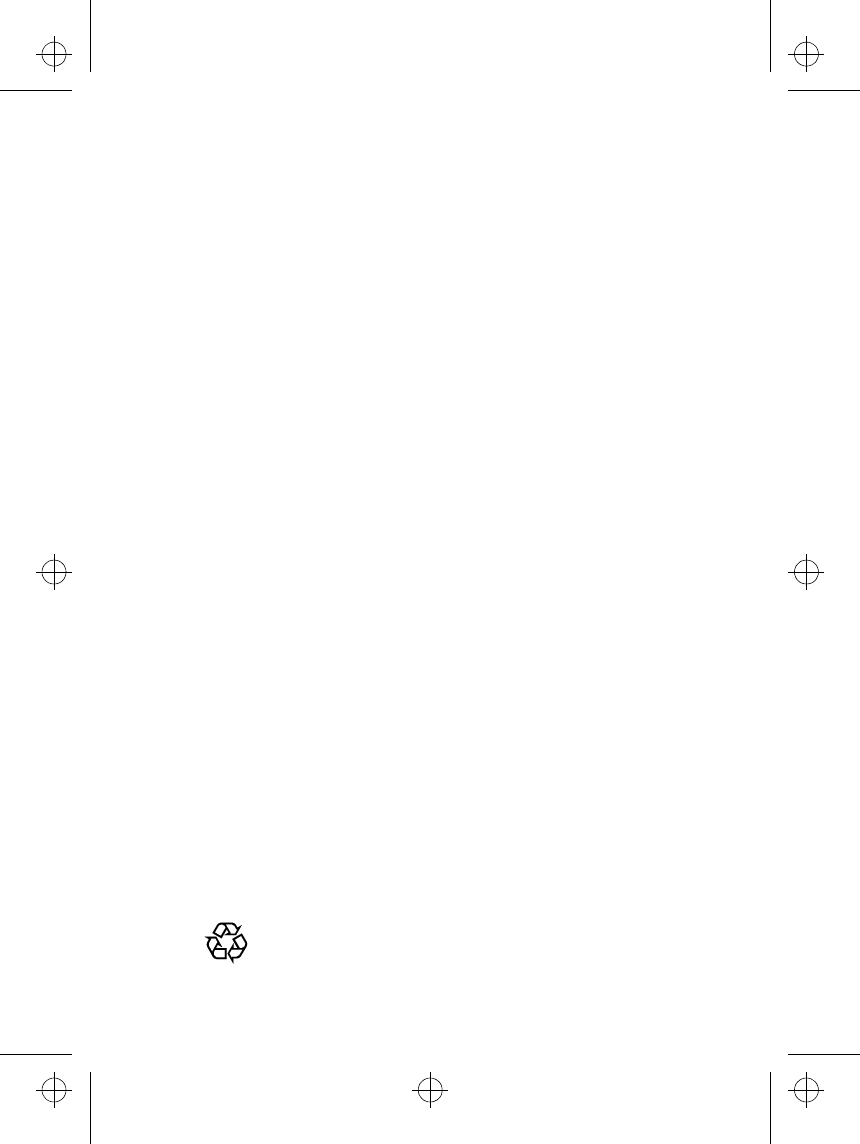
Reference Information
79
source. Do not leave the battery connected to a charger for long-
er than a week, since overcharging may shorten its life. If left un-
used a fully charged battery will discharge itself over time.
• For good operation times, discharge the NiMH battery from time
to time by leaving your phone switched on until it turns itself off.
Do not attempt to discharge the battery by any other means.
• Temperature extremes will affect the ability of your battery to
charge: allow it to cool down or warm up first.
• When the battery is running out of power and only few minutes
of talk time remain, a warning tone is heard and Battery low
is briefly displayed. When no more talk time is left, Battery
empty is displayed and a warning tone is sounded and the
phone switches itself off.
Using the Batteries
• Use the battery only for its intended purpose.
• Never use any charger or battery which is damaged or worn out.
• Do not short-circuit the battery. Accidental short-circuiting can
occur when a metallic object (coin, clip or pen) causes direct
connection of the + and - terminals of the battery (metal strips
on the back of the battery) for example when you carry a spare
battery in your pocket or purse. Short-circuiting the terminals
may damage the battery or the connecting object.
• Leaving the battery in hot or cold places, such as in a closed car
in summer or winter conditions, will reduce the capacity and
lifetime of the battery. Always try to keep the battery between
15 C and 25 C (59 F and 77 F). A phone with a hot or cold battery
may temporarily not work, even when the battery is fully
charged. NiMH batteries performance is particularly limited in
temperatures below -10°C (14 F). Li-Ion batteries performance
is particularly limited in temperatures below -0 C (32 F).
• Do not dispose of batteries in a fire!
Batteries must be recycled or disposed of properly.
Must not be disposed of in municipal waste!
nsm1nyen.frm Page 79 Thursday, July 2, 1998 5:56 PM


















